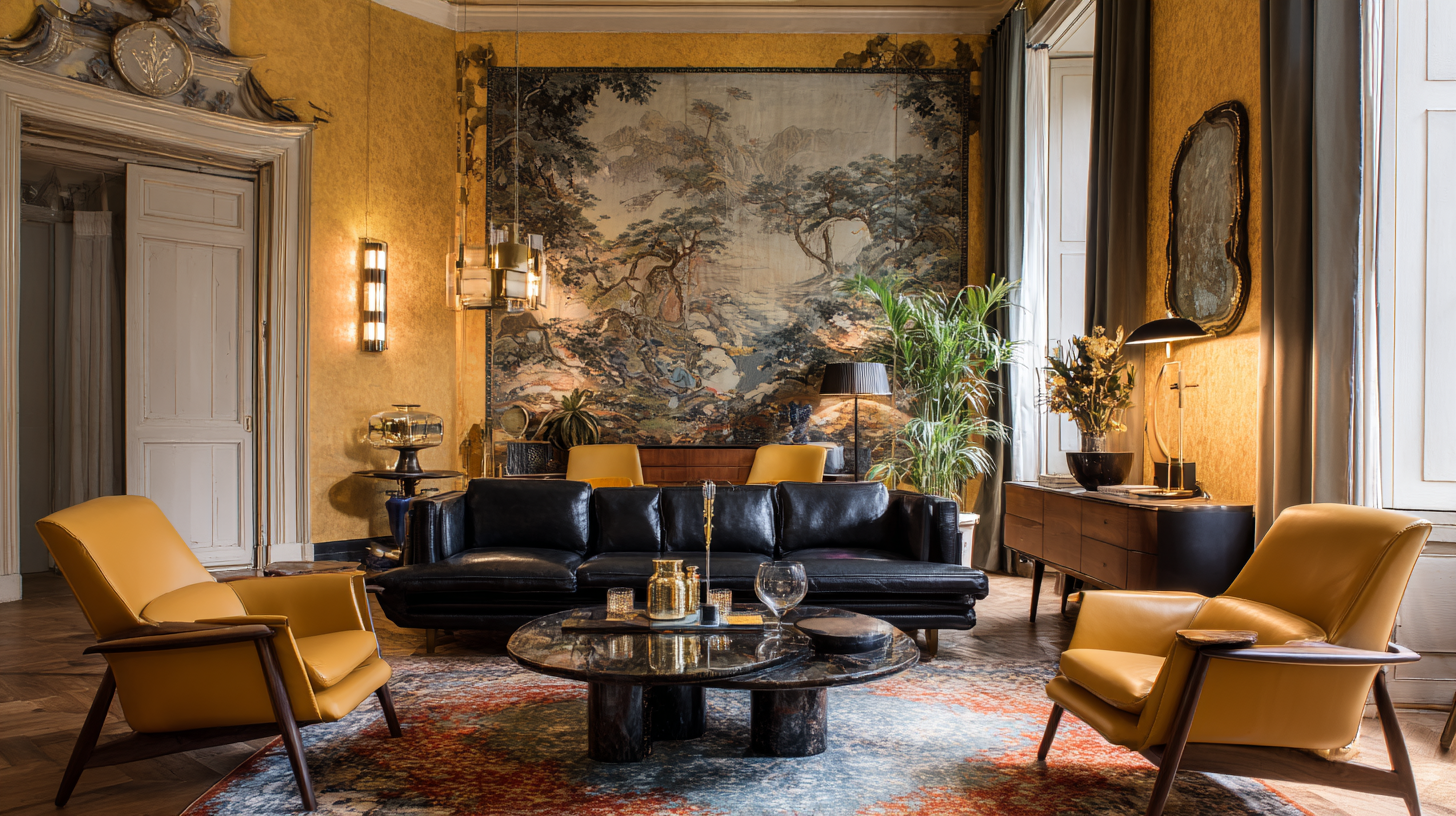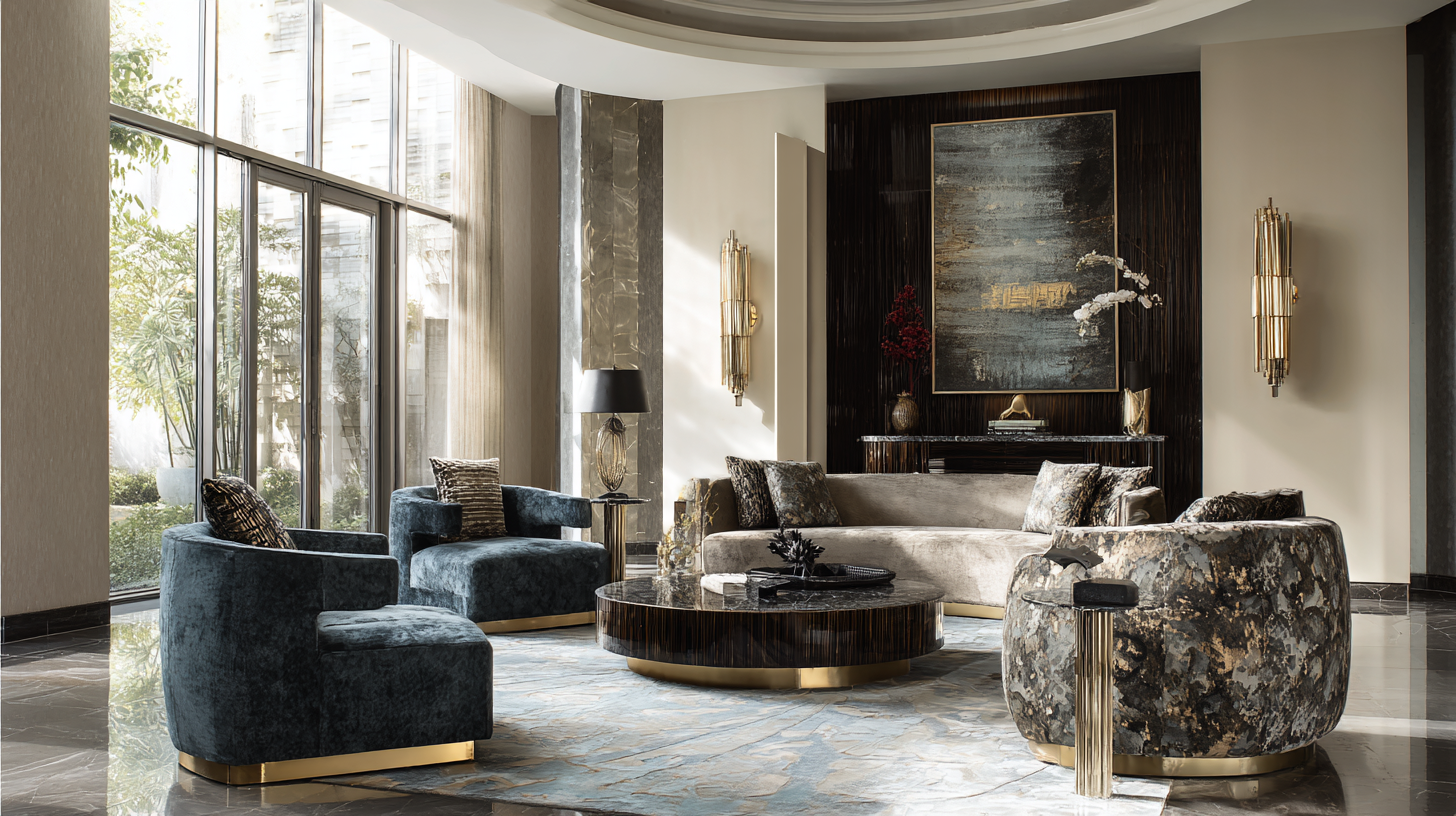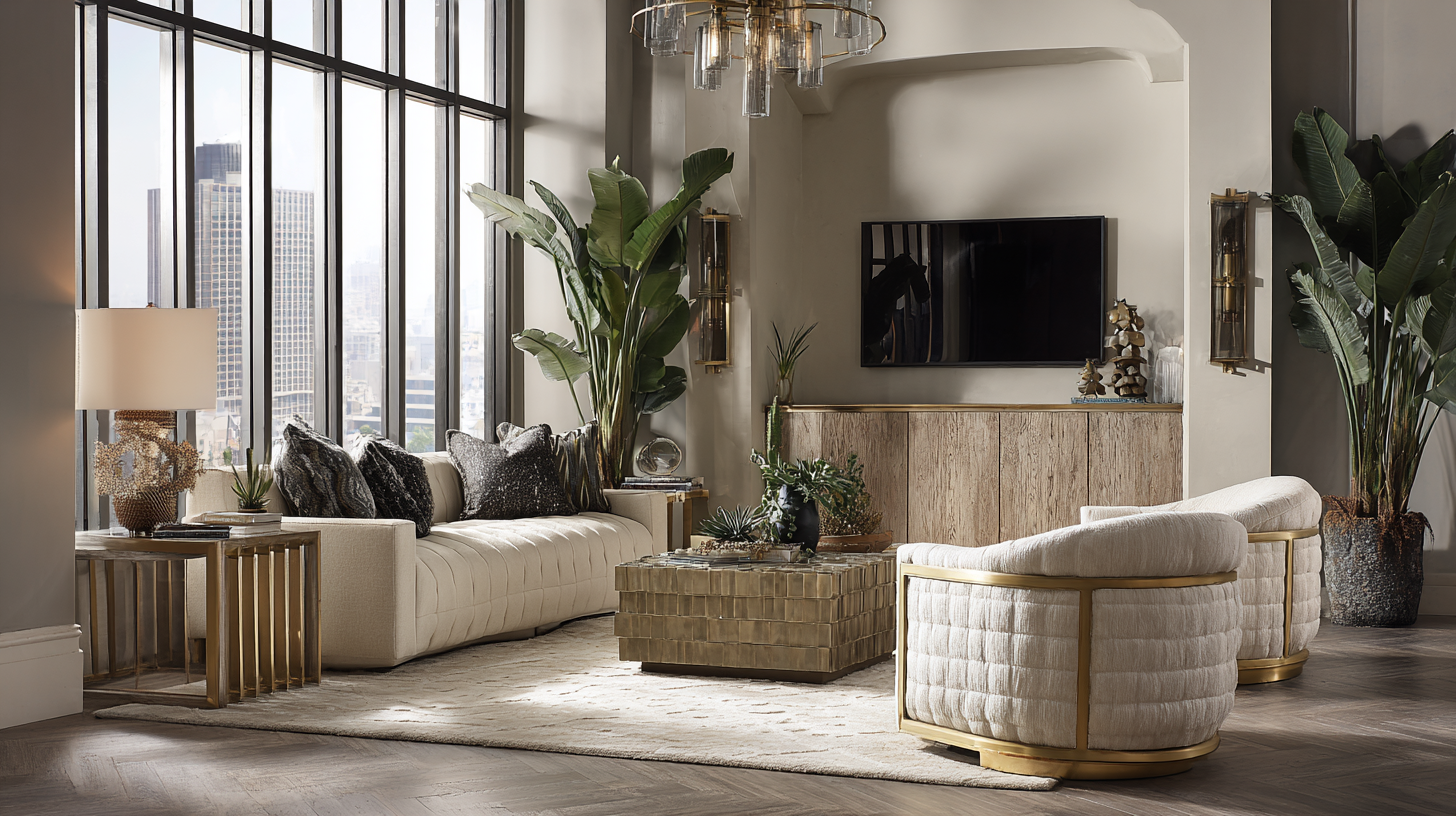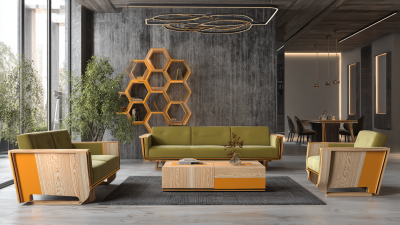Top 5 Stylish Interiors Furniture Trends You Need to Transform Your Home
As we approach 2025, the world of interiors furniture is witnessing a remarkable transformation that reflects both changing consumer preferences and innovative design trends. According to a recent report by the Global Furniture Alliance, the interiors furniture market is expected to grow by 10% annually, highlighting a significant shift towards more stylish and functional living environments. With an increasing emphasis on sustainability, comfort, and personalization, the demand for unique interior solutions is at an all-time high.
Renowned interiors furniture expert, Dr. Sarah Thompson, articulates this emerging trend succinctly, stating, "The modern consumer is no longer satisfied with simply functional furniture; they seek styles that tell a story and enhance their living space." This evolution encourages designers and homeowners alike to explore diverse aesthetics and innovative materials that align with contemporary lifestyles. As we delve into the top five stylish interiors furniture trends that will dominate the market, it is essential to understand the crucial intersection between functionality, environment, and visual appeal in modern design.

Elevate Your Space: Embracing Minimalist Furniture for Maximum Impact
As we embrace the minimalist movement in interior design, the impact of furniture choices becomes increasingly significant. According to the 2022 Furniture Market Trends Report, minimalism has gained traction, with a 25% increase in demand for simple, clean-lined furniture that emphasizes functionality without sacrificing style. This trend is not merely a matter of aesthetics; it reflects a broader cultural shift towards simplicity, sustainability, and efficiency in our living spaces.
Minimalist furniture, characterized by its uncluttered appearance and thoughtful design, enables homeowners to achieve a serene environment. By opting for versatile pieces, such as modular sofas and multipurpose tables, individuals can create spaces that feel open and inviting. Industry experts suggest that incorporating light colors and natural materials enhances this effect, promoting a sense of tranquility. The 2023 Design Trends Research underscores that homes featuring minimalist designs experience a 15% higher occupant satisfaction rate, illustrating how these choices contribute to a more enjoyable and stress-free living experience.
Nature-Inspired Designs: Bringing the Outdoors into Your Home Decor
Nature-inspired designs have become a key trend in home decor, bringing a sense of tranquility and harmony into living spaces. These designs often incorporate organic materials, earthy colors, and natural motifs, creating a seamless connection between indoor environments and the great outdoors. Think of furnishings made from reclaimed wood, linen textiles, and ceramic pieces that mimic the textures and hues of nature. This approach not only enhances aesthetic appeal but also fosters a calming atmosphere, ideal for unwinding after a long day.
Incorporating elements like indoor plants, botanical prints, and nature-themed artwork can further elevate the ambiance of your home. A thoughtfully designed space may include a statement piece, such as a large terrarium or a striking plant, that acts as a focal point, drawing the eye and inspiring conversation. By embracing nature-inspired decor, you can cultivate a sanctuary that rejuvenates the mind and spirit, allowing you to enjoy the beauty of the outdoors right from the comfort of your home.
Bold Colors and Patterns: Making a Statement with Your Furniture Choices
Bold colors and patterns are making a significant impact in the world of interior design, transforming the way we think about furniture choices in our homes. According to the latest report from the International Furniture Design Association, over 68% of interior designers are incorporating vibrant hues into their projects, emphasizing the importance of color as a statement-making tool. Furniture pieces in rich tones such as emerald green, navy blue, and burnt orange not only serve as focal points but also set the mood for any space, allowing homeowners to express their unique personalities and tastes.

In addition to solid colors, the trend of bold patterns is on the rise, with a 45% increase in demand for patterned upholstery in 2023, as reported by the International Textile Association. Stripes, florals, and geometric designs bring a sense of dynamism and energy to interiors, making the furniture a pivotal element of decor. Pairing these striking patterns with complementary colors can lead to stunning visual contrasts, enriching the overall aesthetic of a living space. As we move further into 2023, the emphasis on bold colors and patterns will continue to dominate the furniture industry, encouraging homeowners to embrace creativity and individuality when curating their interiors.
Versatile Multi-Functional Pieces: Saving Space Without Compromising Style
The demand for versatile multi-functional furniture has skyrocketed in recent years, driven by the increasing need for space-saving solutions in modern homes. According to a 2021 report by Allied Market Research, the global furniture market is projected to reach $650 billion by 2027, with a significant portion attributed to the rise of compact living spaces. This trend is not just about practicality; it reflects a shift in consumer preferences towards stylish yet functional designs that enhance their lifestyle without overwhelming their living environments.
Furniture pieces that serve multiple purposes, such as sofa beds, extendable dining tables, and storage ottomans, are becoming essential in achieving a harmonious balance between aesthetics and utility. A study conducted by the National Association of Home Builders found that 60% of homeowners prioritize space-efficient solutions in their home renovations. Designers are now focusing on creating innovative, multi-functional furniture that caters to this demand, allowing individuals to maximize their spaces while maintaining a chic and contemporary decor. This trend is not only attractive but also necessary, catering to urban dwellers facing the challenge of limited living spaces.

Sustainable Materials: Eco-Friendly Furniture Trends for Modern Interiors
In the world of interior design,
sustainable materials are leading the way as a vital trend for creating modern,
stylish homes. As more people recognize the importance of environmentally friendly choices,
eco-friendly furniture is becoming essential.
From reclaimed wood to recycled metals, designers are increasingly incorporating materials that minimize environmental impact while maintaining aesthetic appeal.
These choices not only reduce waste but also bring a unique character to a space, as each piece often tells its own story.
One standout trend is the use of natural fibers, such as
jute, hemp, and
organic cotton, in upholstery and décor.
These materials not only look good but also enhance indoor air quality, making spaces healthier.
Additionally, manufacturers are focusing on sustainable production methods, utilizing low-impact dyes and finishes to create beautiful,
long-lasting products. This shift towards sustainability encourages consumers to make more conscious decisions when furnishing their homes,
ultimately leading to a more responsible and stylish interior.
Related Posts
-

7 Expert Tips for Choosing the Perfect Contemporary Furniture for Your Home
-

How to Choose Best Interior Design Furniture with Exceptional After Sales Support and Low Maintenance Costs
-

Understanding Industry Standards for Best Contemporary Furniture and Reasons for Their Importance
-

Navigating the 2025 Technology Trends in Best Modern Contemporary Furniture A Comprehensive Guide for Global Buyers
-

Understanding Industry Production Standards: How to Choose the Best Interior Design Furniture
-

Exploring the Essence: What Defines Contemporary Furniture Style?

